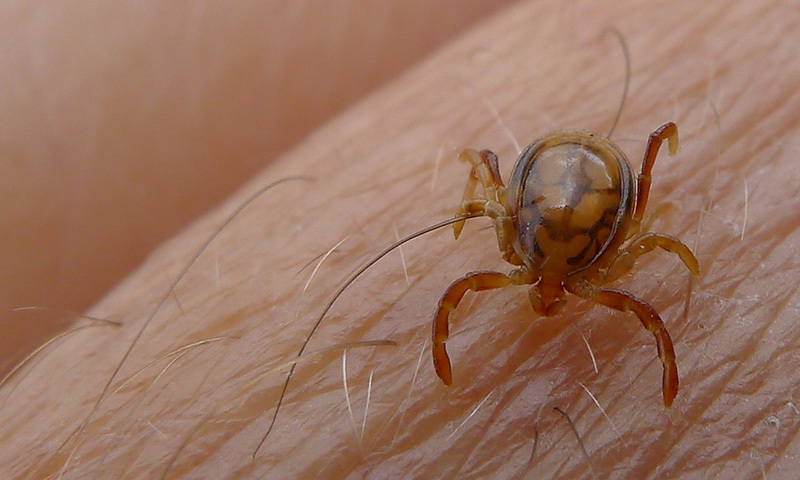
Article by
Crimean-Congo Hemorrhagic Fever (CCHF), more popularly known as Congo Virus, is a new emerging threat to the health care system in Pakistan. It is a widespread disease caused by Nairovirus (from the Bunyaviridae family), which is present in ticks, mostly associated with cattle such as goats and sheep. The ticks are the major vectors and reservoirs of this Virus. The CCHF has been reported and documented to be endemic in Africa, the Middle East, the Balkan States, and Asian countries.
Center for Disease Control and Prevention USA (CDC) says that multiple wild and domestic animals serve the role of amplifying hosts of this virus in which it multiplies and increases its number. It can be transmitted to humans by the bite of infected ticks (especially of the genus Hyalomma) or if a person comes in contact with the infected animal's blood or any other body fluid. Similarly, CCHF can also be transmitted from one infected human to another by the contact of blood and body fluids. Contamination of medical supplies, improper sterilization of medical equipment, and reuse of injection needles are also reported to be the cause of transmission of CCHF.
The incubation period of the virus varies depending on the mode of transmission, ranging from 1 to 6 days. Symptoms include fever, weakness, muscle ache, headache, nausea, vomiting, and abdominal pain, progressing to mood swings, confusion, lethargy, and depression. Complications may include liver enlargement, kidney deterioration, and multi-organ failure, with mortality rates ranging from 10% to 40%. Recovery typically occurs around the 9th or 10th day of illness.
In Pakistan, it was first time reported in 1976 in Rawalpindi, in its General Hospital, and emerged as a high-risk nosocomial (originating in a hospital) infection, as 11 secondary cases were reported right after among whom 3 patients had died. After this, it spread to the other provinces of the country i-e Balochistan and Sindh.
Between the years 2014-2020, there were 365 cases of CCHF reported in Pakistan with a fatality rate of 25%, according to the statistics of the National Institute of Health (NIH). 6 deaths from the 14 confirmed cases were reported in Balochistan in 2021. In 2022, there were 11 cases reported in KPK and Balochistan. Until 3rd June of the current year, 6 deaths had been reported and from August to the middle of October 41 cases were reported in Quetta, Balochistan among which 15 of them were fatal. In November 2023, an outbreak of Congo Fever was reported at a Hospital in Quetta (capital of Balochistan) due to its poor infection control measures. 16 patients, most of whom were health care providers, were shifted to Karachi and admitted to Agha Khan University Hospital. 3 of them died including a doctor and the rest of them recovered. In Karachi, 3 local cases have also been reported from which one patient could not survive. Another case has also been reported in Dawn today (25th November), as I write this article to raise the concern.
The steps should be taken to check the spread of the disease for the wider public interest, to save valuable human lives, and to mitigate yet another emerging challenge to the already vulnerable healthcare system and the economy of the country. The prevention and control of CCHF in animals and ticks are difficult but the use of acaricides (chemicals used to kill ticks and mites) will prove effective in the areas, industries, or livestock-containing sites. Quarantining animals in tick-free sites for 14 days before slaughtering also reduces the risk of animals getting infected and prevents human infection if one comes in contact with its fluids. Awareness regarding the risk factors of CCHF should be raised and people should be educated on the measures they can take to prevent getting the disease. WHO recommended precautions can be accessed by this link: https://www.who.int/news-room/fact-sheets/detail/crimean-congo-haemorrhagic-fever
The Sindh Government has advised implementing SOPs before the Eid-ul-Adha in the province each year (as a mass slaughter of cattle happens in the province like other provinces of the country and other Muslim countries as a religious duty). One of the SOPs includes wearing the gloves during sacrificial process to avoid coming in contact with animal's blood and fluids. The KPK Govt. has also started taking measures to establish checkpoints for seasonal border crossing of animals and spraying the animals with anti-tick sprays. These steps should be appreciated but equal implementation should be done in all the areas and provinces of the country, especially in the currently threatened province i-e Balochistan. The practice of quarantining the animals and the use of vaccines against CCHF should be introduced beforehand. The rural areas should be targeted for vector control measures as they are the site of most of the cattle breeding and the majority of the cases emerge from these areas.
 Monthly "Azeem English Magazine", launched in 2000, records the information about diverse fields like mental health, literature, research, science, and art. The magazine's objective is to impart social, cultural, and literary values to society.
Monthly "Azeem English Magazine", launched in 2000, records the information about diverse fields like mental health, literature, research, science, and art. The magazine's objective is to impart social, cultural, and literary values to society.
+92 51 88 93 092
First Floor, RAS Arcade, Eidhi Market, Street#124, G-13/4, Islamabad, Pakistan, 44000.